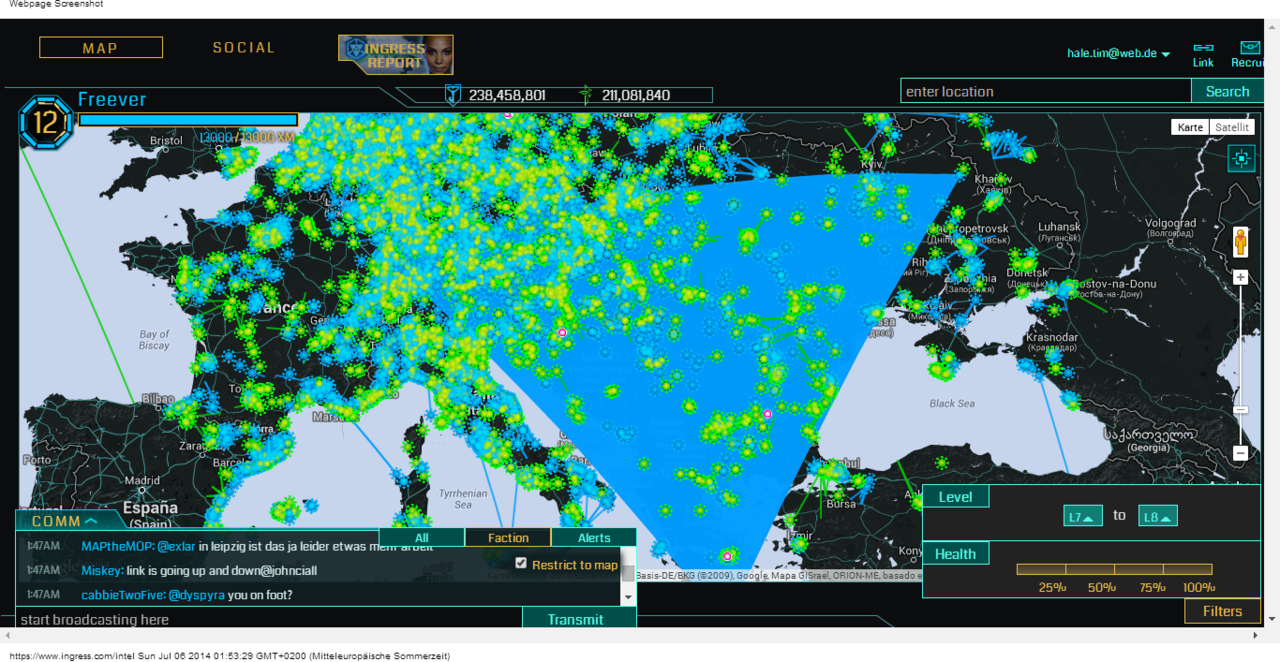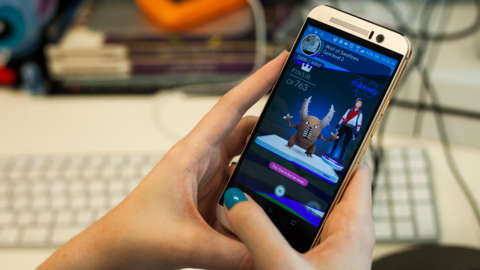On the eve of Pokémon GO's release, over a thousand people gathered at the Sydney Opera House in Australia, some coming from as far as Germany and China, to participate in a major competitive event for Ingress, the preceding augmented reality game from Niantic, the developers of Pokémon GO.
Players representing the two rival "Enlightened" and "Resistance" factions fought real-world battles all over Sydney throughout the day, with the Enlightened winning the day’s conflict. These large-scale battles have previously taken place in cities around the globe--San Diego, Moscow, Dublin, and Kuala Lumpur to name a few recent ones--with the final battle in the series taking place in Tokyo on July 16.
Over 6,000 people took part at the last event in Japan. These massive multiplayer events set up by Niantic for Ingress potentially give us a preview of what the developer has in store for the future of Pokémon GO.

"Our original thesis was that people would just go out with their friends and play" said Archit Bhargava, who has been with Niantic since 2011. "But what ended up happening in small towns and smaller cities was that people would meet other people in the world while playing Ingress, and friendships started emerging and that social aspect became the biggest thing. That became a new tenant for us: that we wanted to encourage social fun, which is why we started doing a lot of events."
Niantic, which had its beginnings in the Google Earth team, launched Ingress in 2012 and the game has since registered over 15 million users. Like Pokémon GO, players fight to gain control of Portals placed in real-world locations of cultural significance. However in Ingress, the capture of these locations can be coordinated with other players to create Control Fields, capturing a geographical area for a team.
The largest control field ever captured in Ingress history had points established in Greece, Germany, and Ukraine. The average distance between points was 1,928km, took months of planning and required the coordination of 200 players.

With Pokémon GO however, there are no immediate plans to create something of Ingress’ scale. GO players can travel to Pokémon gyms placed at major cultural landmarks, and can fight for control of these points on behalf of their chosen faction: Team Valor (Red), Team Mystic (Blue), or Team Instinct (Yellow). This is currently the only competitive aspect.
"The multiplayer aspect is still something we’re exploring, we’re still trying to figure out what's the best way to do that", Bhargava admitted. "So far we’ve learned that multiplayer battles are a lot of fun. When two people from different teams show up at a rival gym, if they collaborate and both have their Pokémon deployed to battle at the same time, they can take down a stronger gym faster."
"But we’re trying our best to rethink what the experience should be; what that real-world Pokémon experience should be like. Obviously we’re learning from Ingress, but it’s going to be a pretty different game. We have a vision for Pokémon, we’re gonna execute on it, but we’re gonna learn based on what the community reaction is."
That community is expected to be huge. Although Ingress’ huge player-base, strategic game mechanics, and original sci-fi world is something Niantic is visibly proud of, Bhargava acknowledged that the appeal of Pokémon GO, and Pokémon’s enormous existing fan base would likely dwarf Ingress' quickly.
However, they’re not perturbed. "For us, we’re really trying to create the genre of real-world gaming. No one’s really done this in a way that we were all excited about” he said. “It’s all about getting people moving, getting them exploring the world around them."

"We’re not that worried about the effect that each game might have on the other, but what we’re hoping is that with both these games, the overall pie of real world games will increase. There could be a board game you could make in the real world where people are capturing locations like Risk or something. My personal fantasy is like a Game of Thrones game where Westeros is mapped out on Earth and you join House Stark or whatever."
Before Pokémon GO and Ingress, Niantic developed the Field Trip app while still a part of Google. This app served as a geolocation-based tour guide for smartphones: When you got close to a place of significance, it would notify you with with historical trivia regarding the location. This sentiment--teaching people about local lore--has underscored their projects ever since.
"We want people to go to interesting places in their cities so they can see the world around them with new eyes. Every now and then there’s a really cool mural or art installation that no-one even notices because you’re walking by looking at your phone all day and no-one actually looks at that and recognises there’s all this awesomeness all around them. We want players to have those real-world experiences either with people they know or people they meet because of the game."
"When someone posts up a story on our forums saying that this person came out of depression because they were in their house, didn’t want to go out, and Ingress was the reason they were going out and making friends, that to us is like: “Holy shit. We just changed someone’s life. These pieces really became the game design principles for Ingress and now, Pokémon GO.

